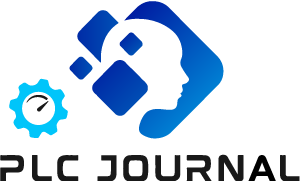Programmable Logic Controllers (PLCs) are critical components in industrial automation, controlling machinery and processes in manufacturing, energy, and other sectors. As with any system that requires user authentication, PLC Password Problems often rely on passwords to secure access and prevent unauthorized changes to their programming. However, password management for PLCs can be fraught with challenges, leading to operational inefficiencies, security vulnerabilities, and even system downtime. Below, we explore the most common PLC password problems and provide actionable solutions to address them.
1. Forgotten Passwords
One of the most frequent issues with PLC Password Problems management is forgotten passwords. This problem arises when engineers or technicians fail to document or remember the passwords they set for accessing PLCs. Over time, personnel changes, lack of record-keeping, or infrequent access to the system can exacerbate this issue.
Impact:
- Inability to access or modify PLC programs.
- Delays in troubleshooting or system updates.
- Potential need for costly password recovery services or system resets.
Solutions:
- Centralized Password Management: To begin with, use a secure password management tool to store and organize PLC password problems efficiently. Moreover, make sure that only authorized personnel have access to this tool, thereby enhancing security and preventing unauthorized usage.
- Documentation: Maintain a secure, up-to-date record of all PLC Password Problems in a centralized location, such as a locked cabinet or encrypted digital file.
- Regular Audits: Conduct periodic reviews of password records to ensure accuracy and accessibility.
2. Weak Passwords – PLC Password Problems
Weak passwords are a significant security risk for PLC Password Problems systems. Many users opt for simple, easy-to-remember passwords, such as “1234” or “admin,” which can be easily guessed or cracked by malicious actors.
Impact:
- Increased vulnerability to unauthorized access.
- Risk of sabotage, data theft, or operational disruption.
Solutions:
- Enforce Strong Password Policies: Require passwords to include a mix of uppercase and lowercase letters, numbers, and special characters.
- Minimum Length: Set a minimum password length (e.g., 12 characters) to enhance security.
- Regular Updates: Mandate periodic password changes to reduce the risk of compromise.
3. Password Expiry – PLC Password Problems
Password expiry policies are designed to enhance security by requiring users to change their passwords periodically. However, this can lead to problems if users forget to update their passwords or struggle to create new ones that meet complexity requirements.
Impact:
- Locked-out users unable to access the PLC Password Problems.
- Frustration and delays in system maintenance.
Solutions:
- Grace Periods: Implement a grace period that allows users to update their passwords after expiry without being locked out.
- Notifications: Send automated reminders to users before their passwords expire.
- User Training: Educate users on the importance of timely password updates and how to create strong passwords.
4. Multiple Failed Attempts – PLC Password Problems
Many PLC Password Problems systems are configured to lock users out after a certain number of failed login attempts. While this is a valuable security feature, it can cause problems if legitimate users are repeatedly locked out due to forgotten passwords or input errors.
Impact:
- Operational delays while waiting for account unlocks.
- Increased workload for IT support teams.
Solutions:
- Account Lockout Thresholds: First, adjust the number of allowed failed attempts carefully to balance security and usability. Additionally, consider implementing gradual lockouts or alerts, thereby preventing unauthorized access while minimizing disruption for legitimate users.
- Self-Service Unlock: Implement a self-service unlock mechanism that allows users to reset their accounts after a brief waiting period.
- User Training: Train users to double-check their credentials before submitting login attempts.
5. Lack of Documentation – PLC Password Problems
In many organizations, PLC passwords are not properly documented, leading to confusion and inefficiencies. This problem is particularly common in environments with high staff turnover or where multiple teams are responsible for PLC maintenance.
Impact:
- Difficulty accessing PLCs during emergencies.
- Increased reliance on external support for password recovery.
Solutions:
- Standardized Documentation: First, develop a standardized process for documenting PLC passwords. Then, ensure that all relevant personnel are properly trained on this process. Furthermore, regularly review and update the documentation to maintain accuracy and consistency.
- Secure Storage: Store password documentation in a secure, centralized location, such as a password manager or encrypted database.
- Regular Updates: To maintain security, periodically review and update password records. Additionally, ensure that any changes in personnel or system configurations are accurately reflected. Moreover, communicate these updates promptly to all relevant staff to avoid access issues.
6. Password Sharing – PLC Password Problems
Password sharing is a common but risky practice in many industrial settings. Technicians may share passwords to expedite access or collaborate on tasks, but this can lead to security breaches and accountability issues.
Impact:
- Increased risk of unauthorized access.
- Difficulty tracking changes or identifying responsible parties in the event of an incident.
Solutions:
- Individual Accounts: To enhance security, assign unique user accounts to each technician or engineer. Furthermore, this approach ensures accountability and traceability. In addition, it helps monitor individual actions and prevents unauthorized access.
- Access Control Policies: To strengthen security, implement role-based access control (RBAC) in order to limit access to sensitive systems and functions. Additionally, this approach ensures that only authorized personnel can perform specific tasks, thereby reducing the risk of accidental or intentional misuse. Moreover, regularly reviewing and updating these policies helps maintain effective control over system access.
- Audit Trails: To enhance security, enable logging and monitoring so that you can effectively track user activity and quickly detect any unauthorized access. Furthermore, by regularly reviewing these audit trails, you can identify patterns or anomalies, thereby strengthening overall system accountability and compliance.
7. Inconsistent Password Policies
Inconsistent password policies across different PLCs or facilities can create confusion and weaken overall security. For example, some systems may require complex passwords, while others allow weak or default passwords.
Impact:
- Security vulnerabilities due to weak passwords on some systems.
- User frustration and errors when switching between systems with different requirements.
Solutions:
- Standardized Policies: To ensure consistency and security, develop and enforce a standardized password policy across all PLCs and facilities. Additionally, by regularly reviewing and updating this policy, you can address emerging security challenges and maintain best practices throughout your organization.
- Regular Audits: To maintain security and accountability, conduct periodic audits to ensure compliance with password policies. Furthermore, by analyzing the audit results, you can identify potential weaknesses and implement corrective actions promptly.
- User Training: To enhance security, educate users on the importance of adhering to password policies. Additionally, provide guidance on how to create compliant passwords, and furthermore, offer regular refresher sessions to reinforce best practices.
8. User Access Control
Poor user access control can lead to unauthorized individuals gaining access to PLC systems. This problem often arises when access permissions are not regularly reviewed or updated.
Impact:
- Increased risk of sabotage, data theft, or operational disruption.
- Difficulty identifying the source of unauthorized changes.
Solutions:
- Role-Based Access Control (RBAC): To improve security, implement RBAC so that, in addition, users only have access to the systems and functions necessary for their specific roles. Moreover, regularly review and adjust access rights to maintain proper control.
- Regular Reviews: To maintain security, periodically review and update user access permissions. Furthermore, ensure that these updates reflect any changes in personnel, job responsibilities, or organizational structure.
- Multi-Factor Authentication (MFA): Enhance security by requiring additional authentication factors, such as a one-time code or biometric verification.
9. Outdated Security Protocols
Many older PLC systems rely on outdated security protocols that are vulnerable to modern cyber threats. For example, some systems may use weak encryption or lack support for multi-factor authentication.
Impact:
- Increased risk of cyberattacks and data breaches.
- Difficulty integrating with modern security tools and practices.
Solutions:
- System Upgrades: Whenever feasible, upgrade older PLC systems to newer models with enhanced security features. Additionally, consider integrating these upgrades alongside other system improvements to maximize overall efficiency and protection.
- Network Segmentation: To enhance security, isolate PLCs on separate network segments. Furthermore, by doing so, you can effectively limit their exposure to external threats and reduce the risk of unauthorized access.
- Regular Updates: To maintain optimal security, consistently apply firmware updates and security patches. Moreover, by doing so, you can effectively address known vulnerabilities and reduce potential risks to your PLC systems.
10. Difficulty in Password Recovery
Password recovery can be a significant challenge for PLC systems, particularly if there is no established process or if the system lacks built-in recovery options.
Impact:
- Extended downtime while waiting for password recovery.
- Increased costs for external support or system resets.
Solutions:
- Built-In Recovery Options: Choose PLC systems with built-in password recovery mechanisms, such as security questions or email verification.
- Backup Access: To ensure uninterrupted system management, maintain a backup administrative account. Additionally, restrict its access for emergency use only, thereby providing a secure fallback option in critical situations.
- Vendor Support: Firstly, establish a relationship with the PLC vendor. Moreover, maintain this connection to ensure timely support, especially in the event of password recovery issues, thereby minimizing downtime and potential disruptions.
11. Reusing Passwords Across Systems
Reusing the same password across multiple systems is a common but dangerous practice. If one system is compromised, attackers can use the same credentials to access other systems, including PLCs.
Impact:
- Increased risk of widespread system breaches.
- Difficulty containing the damage from a security incident.
Solutions:
- Unique Passwords: First and foremost, enforce the use of unique passwords for each system or device. Additionally, regularly update these passwords to enhance security and further reduce the risk of unauthorized access.
- Password Managers: Firstly, encourage the use of password managers to generate and store complex, unique passwords. Furthermore, they help reduce human error, simplify password management, and ensure that passwords are securely maintained across different systems.
- User Training: Firstly, educate users on the risks of password reuse. Additionally, provide guidance on how to create secure, unique passwords. Moreover, reinforce best practices through periodic reminders and practical exercises to ensure long-term compliance.
12. Lack of Multi-Factor Authentication (MFA)
Many PLC systems rely solely on passwords for authentication, leaving them vulnerable to attacks. Multi-factor authentication (MFA) adds an extra layer of security by requiring additional verification steps, such as a one-time code or biometric scan.
Impact:
- Increased susceptibility to brute force attacks and credential theft.
- Limited ability to detect and prevent unauthorized access.
Solutions:
- Implement MFA: Wherever possible, enable multi-factor authentication (MFA) for PLC access to significantly enhance security. Additionally, MFA provides an extra layer of protection beyond standard passwords. Furthermore, by combining different authentication factors, you reduce the risk of unauthorized access and strengthen overall system security.
- Alternative Authentication Methods: For enhanced security, consider using hardware tokens or biometric authentication. Additionally, these methods can complement traditional passwords. Moreover, by implementing multiple layers of authentication, you further reduce the risk of unauthorized access.
- Vendor Support: Work with PLC vendors to explore MFA options for legacy systems.
13. Phishing and Social Engineering Attacks
Phishing and social engineering attacks target users to obtain their passwords or other sensitive information. These attacks can be particularly effective if users are not trained to recognize them.
Impact:
- Unauthorized access to PLC systems.
- Potential for sabotage, data theft, or operational disruption.
Solutions:
- Implement MFA: Wherever possible, enable multi-factor authentication (MFA) for PLC access to significantly enhance security. Additionally, MFA provides an extra layer of protection beyond standard passwords. Furthermore, by combining different authentication factors, you reduce the risk of unauthorized access and strengthen overall system security.
- Email Filtering: To enhance security, implement email filtering solutions that can effectively detect and block phishing attempts. Additionally, these filters help prevent malicious emails from reaching end users. Moreover, by combining filtering with user awareness training, you can further reduce the risk of security breaches caused by phishing.
- Incident Response Plan: First, develop a comprehensive incident response plan, and then test it regularly to ensure readiness. Furthermore, having a well-practiced plan allows your team to quickly address security breaches. Additionally, by continuously reviewing and updating the plan, you can adapt to emerging threats and improve overall system resilience.
14. Storing Passwords in Plain Text
Storing passwords in plain text, whether in files, emails, or databases, is a significant security risk. If these storage locations are compromised, attackers can easily access and misuse the passwords.
Impact:
- High risk of password theft and unauthorized access.
- Potential for widespread system breaches.
Solutions:
- Encryption: Firstly, store passwords using strong encryption algorithms. Moreover, ensure that encryption keys are managed securely. Additionally, regularly update the encryption protocols to keep up with evolving security standards, thereby protecting sensitive information from unauthorized access.
- Secure Storage Solutions: Use password managers or secure vaults to store and manage passwords.
- Access Controls: Restrict access to password storage locations to authorized personnel only.
15. Overprivileged Accounts
Overprivileged accounts have more access rights than necessary, increasing the risk of misuse or accidental damage. This problem often arises when users are granted administrative access for convenience.
Impact:
- Increased risk of unauthorized changes or sabotage.
- Difficulty tracking and attributing actions to specific users.
Solutions:
- Least Privilege Principle: First and foremost, grant users the minimum level of access required to perform their tasks. Additionally, regularly review and adjust access levels as roles and responsibilities change. Furthermore, combining this principle with access monitoring helps ensure that sensitive systems remain secure.
- Role-Based Access Control (RBAC): Implement RBAC to ensure that access rights are aligned with user roles.
- Regular Reviews: Periodically review and adjust user permissions to reflect changes in responsibilities.
16. No Monitoring or Alerts for Suspicious Activity
Without monitoring and alerting mechanisms, organizations may fail to detect unauthorized access or suspicious activity in a timely manner.
Impact:
- Delayed response to security incidents.
- Increased damage from undetected breaches.
Solutions:
- Logging and Monitoring: Enable logging and monitoring for PLC access and activity.
- Alerts: Configure alerts for unusual or suspicious activity, such as multiple failed login attempts.
- Incident Response: Develop and test an incident response plan to quickly address detected threats.
17. Inadequate Training on Password Best Practices
Many password-related issues stem from a lack of awareness or understanding of best practices among users.
Impact:
- Increased likelihood of weak passwords, password reuse, and other risky behaviors.
- Higher vulnerability to phishing and social engineering attacks.
Solutions:
- Regular Training: Conduct regular training sessions on password best practices and cybersecurity awareness.
- Clear Guidelines: Provide users with clear, written guidelines for creating and managing passwords.
- Simulated Phishing Tests: Use simulated phishing tests to reinforce training and identify areas for improvement.
18. Legacy Systems with Poor Security
Legacy PLC systems often lack modern security features, making them vulnerable to attacks. These systems may also be difficult to update or replace due to cost or operational constraints.
Impact:
- Increased risk of cyberattacks and data breaches.
- Difficulty integrating with modern security tools and practices.
Solutions:
- Network Segmentation: Isolate legacy systems on separate network segments to limit their exposure to external threats.
- Security Enhancements: Implement additional security measures, such as firewalls and intrusion detection systems, to protect legacy systems.
- Upgrade Plans: Develop a plan to gradually upgrade or replace legacy systems with more secure alternatives.
19. No Regular Security Audits
Without regular security audits, organizations may fail to identify and address vulnerabilities in their PLC systems.
Impact:
- Undetected security weaknesses.
- Increased risk of breaches and operational disruptions.
Solutions:
- Scheduled Audits: Conduct regular security audits to identify and address vulnerabilities.
- Third-Party Assessments: Engage third-party experts to perform comprehensive security assessments.
- Remediation Plans: Develop and implement plans to address identified vulnerabilities.
20. Overreliance on Passwords
Relying solely on passwords for security can be risky, as passwords can be stolen, guessed, or bypassed.
Impact:
- Increased vulnerability to attacks.
- Limited ability to detect and prevent unauthorized access.
Solutions:
- Multi-Factor Authentication (MFA): Implement MFA to add an extra layer of security.
- Alternative Authentication Methods: Explore alternative authentication methods, such as biometrics or hardware tokens.
- Continuous Monitoring: Use continuous monitoring to detect and respond to suspicious activity.
21. Unencrypted Password Transmissions
Transmitting passwords over unencrypted channels exposes them to interception by attackers.
Impact:
- High risk of password theft and unauthorized access.
- Potential for widespread system breaches.
Solutions:
- Encryption: Use encryption protocols, such as SSL/TLS, to secure password transmissions.
- Secure Channels: Ensure that all communication channels used for password transmission are secure.
- User Training: Educate users on the importance of using secure channels for password transmission.
22. Default Passwords Not Changed
Many PLC systems come with default passwords, which are often well-known and easily guessable. Failing to change these passwords leaves the system vulnerable to attacks.
Impact:
- High risk of unauthorized access.
- Potential for sabotage, data theft, or operational disruption.
Solutions:
- Immediate Password Changes: Require users to change default passwords immediately after installation.
- Audits: Conduct regular audits to ensure that default passwords have been changed.
- User Training: Educate users on the importance of changing default passwords.
23. No Account Lockout Mechanisms
Without account lockout mechanisms, attackers can repeatedly attempt to guess passwords without being detected or blocked.
Impact:
- Increased risk of brute force attacks.
- Difficulty detecting and preventing unauthorized access.
Solutions:
- Account Lockout Policies: Implement account lockout mechanisms after a specified number of failed login attempts.
- Alerts: Configure alerts for multiple failed login attempts to detect potential brute force attacks.
- User Training: Educate users on the importance of reporting suspicious activity.
24. Poorly Managed Shared Accounts
Shared accounts are often used for convenience, but they can lead to accountability issues and increased security risks.
Impact:
- Difficulty tracking and attributing actions to specific users.
- Increased risk of unauthorized access or misuse.
Solutions:
- Individual Accounts: Assign unique user accounts to each individual to ensure accountability.
- Access Controls: Implement role-based access control (RBAC) to limit access to sensitive systems and functions.
- Audit Trails: Enable logging and monitoring to track user activity and detect unauthorized access.
25. Lack of Regular Password Updates
Failing to regularly update passwords increases the risk of compromise, especially if passwords are weak or have been exposed in a breach.
Impact:
- Increased vulnerability to attacks.
- Difficulty detecting and preventing unauthorized access.
Solutions:
- Password Expiry Policies: Implement policies requiring regular password updates.
- User Training: Educate users on the importance of regular password updates and how to create strong passwords.
- Automated Reminders: Use automated reminders to prompt users to update their passwords before they expire.
Conclusion – PLC Password Problems
Effective password management is critical to maintaining the security and functionality of PLC systems. By addressing common problems such as forgotten passwords, weak passwords, and inconsistent policies, organizations can reduce the risk of unauthorized access, operational delays, and costly downtime. Implementing best practices such as centralized password management, role-based access control, and regular audits can help ensure that PLC systems remain secure and accessible to authorized personnel. Additionally, investing in user training and modern security protocols can further enhance the resilience of industrial automation systems in the face of evolving cyber threats.
FAQ – The Most Common PLC Password Problems and How to Fix Them
1. What should I do if I forget the PLC password?
- Solution No problem if you forget your PLC password. Contact our support team or WhatsApp us.
2. Why is my PLC not accepting the correct password?
- Solution: Double-check for typos, case sensitivity, or language settings (e.g., keyboard layout). If the issue persists, the password may have been changed without your knowledge, or the PLC memory could be corrupted. Resetting the PLC or contacting technical support may be necessary.
3. How can I recover a lost password for a Siemens PLC?
- Solution: Siemens PLCs often store passwords in a project file. If you don’t have access to the original project file, you can Free Download All PLC HMI Password Unlock V5.7 rar 5 (MB) 2025
4. What happens if I enter the wrong password multiple times?
- Solution: Many PLCs have a security feature that locks the system after multiple failed attempts. To unlock it, you may need to power cycle the PLC, use a master password, or contact our Support Team.
5. How do I bypass a PLC password in an emergency?
Solution: Bypassing a password is not recommended due to security risks. However, in emergencies, you can reset the PLC to factory settings (note that this will erase all programs).
For any additional queries or support, please email at picjournalweb@gmail.com. OR WhatsApp-







